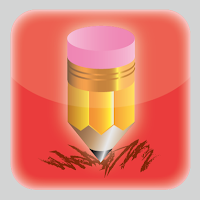There is quite a bit of information available on business planning, but as we illustrators know all to well, the illustration business, is by it’s very nature is different than most other businesses. For one thing, it is neither a service business, nor is it a product providing business, it is both. So right off the bat, business models that only work exclusively for either services or products, which are most of them, are not a good fit for an illustration business.
 |
| © 2000 Don Arday. |
The most standard business plan is a start-up plan, which defines the steps for a new business. It covers standard topics including the company, product or service, market, forecasts, strategy, implementation milestones, management team, and financial analysis. The financial analysis includes projected sales, profit and loss, balance sheet cash flow, and probably a few other tables. The plan starts with an executive summary and ends with appendices showing monthly projections for the first year.
A strategic plan, or a “hopes and dreams” plan, focuses more on the big picture priorities to provide a framework for making smaller decisions. For the sole-proprietor illustrator, it is a personal plan that provides a definition of the business and a description of future aspirations. Detailed cost factors, equipment needs, space requirements, etc., are not the focal point of a strategic plan.
Do You Need a Business Plan?
If you intend to borrow money for your business, in addition to demonstrating evidence of financial stability, you will need a business plan. Depending on how you look at it, many illustrators do not need to borrow money to start a business. If you don’t have a need to borrow money, a business plan can be an informal one. I said depending on how you look at it, because many illustrators have already taken out a loan for the purpose of creating an illustration business, a student loan for their college education. After all, the debit created by the loan will factor into the illustration business operating costs in some cases for many years.
 |
| © 2000 Don Arday. |
Even though a business plan may not be necessitated by the need for external financing, having one can be vitally important to how you will make decisions and conduct your business, so it is wise to have a plan. For illustration, the plan can be a strategic plan, a start-up plan, or a combination of the two.
The Strategic Plan Objective
A plan provides guidance. Guidance provides direction. Direction leads to a goal.
The Start-Up Plan Objective
A plan identifies needs. Needs lead to resources. Resources support work.
A business plan should be as simple as possible. It should be appropriate to the scope and circumstances that will constitute your interpretation of your illustration business situation, i.e., your business environment.
Even if you're starting off as a sole-proprietor, and you have your own resources for your business, an informal business plan can greatly improve the chances that your illustration business will succeed. With a plan, you will have a blueprint for building your business in well thought out stages. Special Note: Your business plan should be written for non-artists.
Illustration Business Plan Outline
1. Overview
A brief statement describing your business including location, market segment, etc.
2. Objectives
A statement should be provided for both short-term objectives (three years or less), and long-term objectives (five years or more).
3. Mission Statement
A mission statement to establish a business goal and how you intend to achieve it.
4. Key Advantages
A statement or list of the main areas of specialization or expertise you have to offer. What might make your business different from the competition.
5. Company Synopsis
5a. Type of Company
A company type identifies a prescribed business structure for purposes of legal and tax requirements and advantages. Types of companies include; a sole-proprietorship (single ownership), also called a sole-trader; a partnership (shared ownership); a limited liability company (LLC), a type of partnership; and a corporation. Each type has advantages and disadvantages and should be thoroughly researched as to which will work best for your business.
5b. Inventory
Furniture, equipment, materials, computer hardware, and software should all be included.
5c. Assets and Liabilities
Inventory items should all be listed as assets and given a value for a loan application if appropriate. Liabilities should also be listed, e.g., computer loans, rent, utilities, etc.
5d. Start-Up Requirements
A list of all business start-up needs with a description and the expenditures relating to them. This should contain all aspects needed for your illustration business such as office space including square footage, arrangement, internet, and utilities needs. Include equipment needs such as computers, software, hard drives, printers, scanners, modems, telephones, copiers, etc. List furnishing needs, for instance desks, file cabinets, chairs, easels, taborets, tables, bookshelves, etc. Expendable materials should also be listed and costs estimated. This would include computer, art, and office supplies. Detail the monetary requirements such as rent, utility fees, salaries, insurance premiums, and tax provisions, e.g., self-employment social security contributions, etc.
5e. Support Services
List any support services your business will rely on. Common support services for illustrators include digital output bureaus, photographers, models, delivery services, web hosting providers, consultants, etc.
6. Illustration Pricing Structure
An explanation of product and services pricing including the method used for charges, be it based on a lump-sum payment, or an hourly-wage formula or both. There may be a lump sum charge for the illustration/creative product itself, and hourly-wage fees for supplemental services such as meeting time, and non-creative production fees.
7. Marketing Strategy
A statement outlining the plan for marketing your illustration business including media and means. Marketing includes all forms of promotion, both purchased and gratis. Purchased refers to those forms of promotion that you have to pay for, while gratis refers to those where the promotion has no cost.
7a. Purchased Promotion
Advertising in any form, either print or online; direct mail; identification and signage; a web presence that might include a website, portfolio hosting sites, a blog (paid), a Facebook subscription (paid), etc. Some less thought of purchased promotions include paid memberships in organizations; entry fees to competitions; and perhaps most importantly, portfolio fabrication and maintenance; etc.
7b. Gratis Promotion
Often overlooked, plans for encouraging client referrals, leveraging networking relationships, and capitalizing on reputation/acknowledgements should be stated.
The internet provides many opportunities for gratis promotion such as a free Facebook page, Google+ page, Twitter account, Linkedin page, Pinterest account, free blog page, membership in online groups, free portfolio sites such as Deviantart, etc.; and more and more new free promotional opportunities are constantly coming available. This continuous change makes gratis promotion somewhat less defined than purchased promotion.
7c. Targets
Targets equate to your intended customer base. It may be one or more specialized markets like publishing or a segment of a market like nature publications; a specific category of work like children’s book illustration; a defined location like the New York city area; a list of specifically sought after clients.
8. Finances
8a. Breakeven Estimation
A breakeven estimation identifies the actual operating costs of a business for the purpose of knowing when earnings represent actual profit.
8b. Pro Forma Estimation
If it is necessary to go into detail on the financial aspects of your illustration business, say to secure a loan, you may want to prepare “pro forma” statements for cash flow and profit and loss. A pro forma is a financial statement based on financial assumption or prediction, it can also reflect a financial development that will occur in the future, or has come into effect from the past. An example might be an expected tax break that will occur at reporting time.








